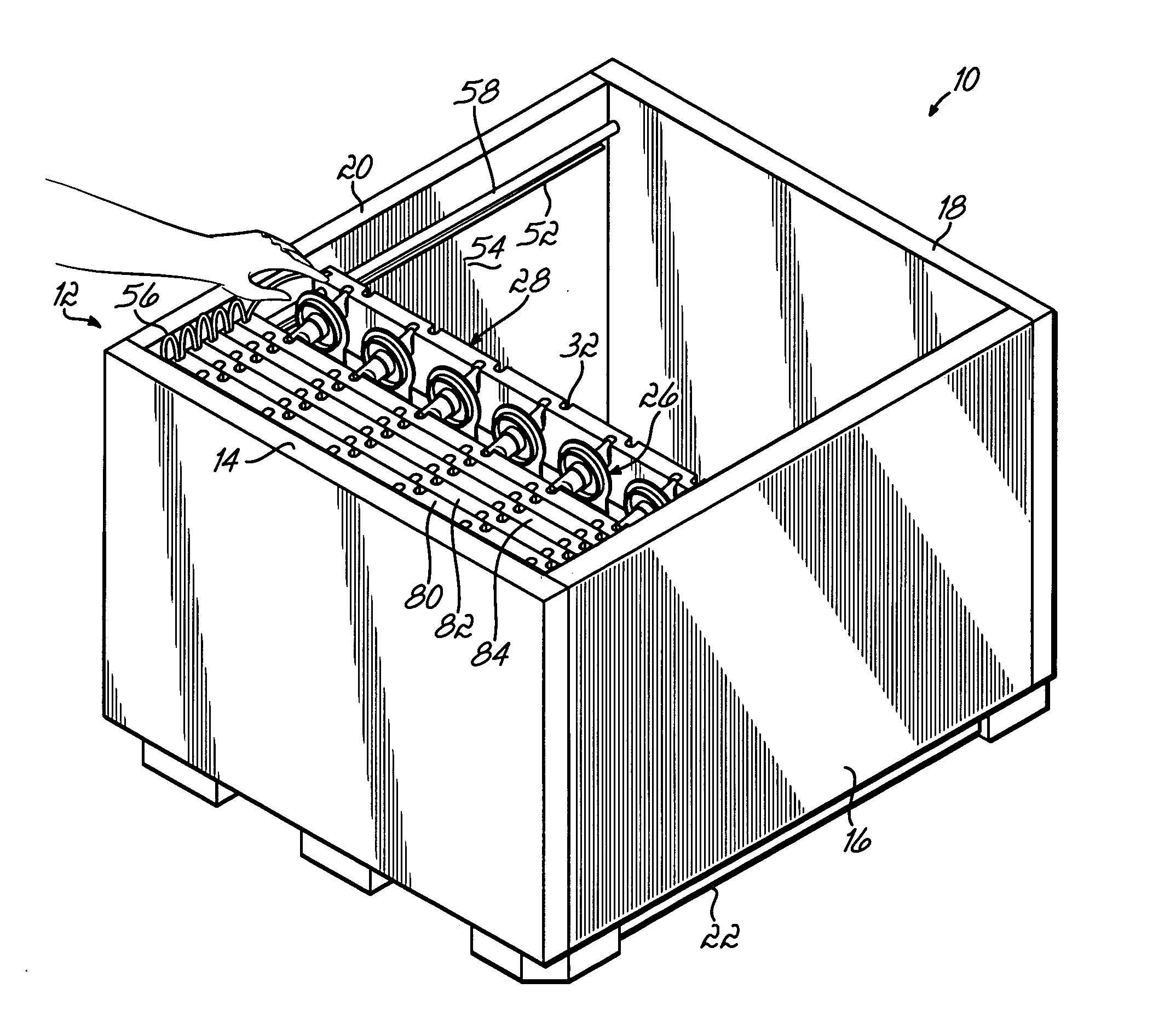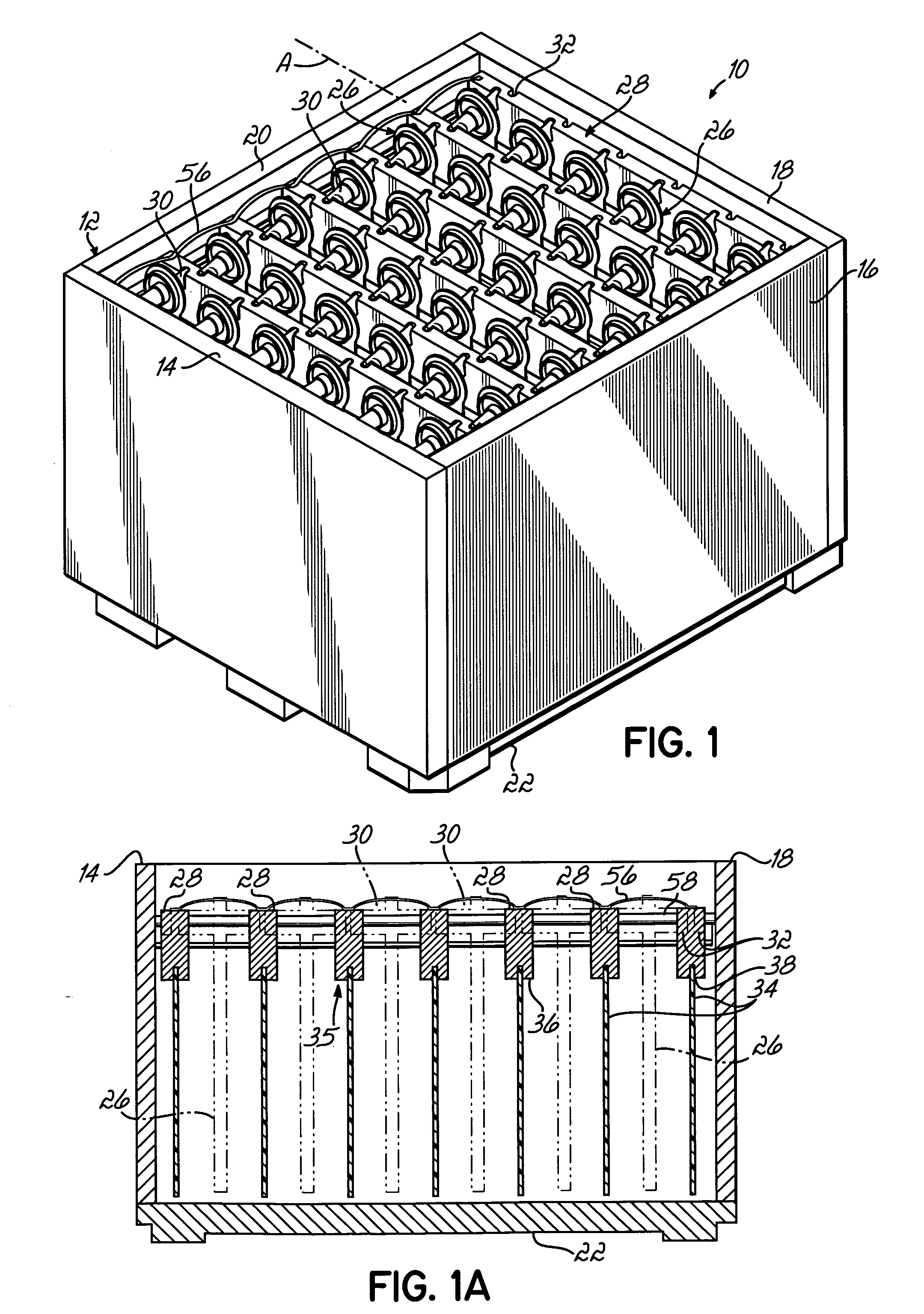Container having sliding support members
a technology of support member and container, which is applied in the field of containers, can solve the problems of unsatisfactory access and removal of parts from containers, difficult and time-consuming removal of parts therein, and stress or strain on the line worker, and achieves the effect of convenient access and efficient and safe removal
- Summary
- Abstract
- Description
- Claims
- Application Information
AI Technical Summary
Benefits of technology
Problems solved by technology
Method used
Image
Examples
Embodiment Construction
[0039] Referring to FIG. 1, there is illustrated a reusable and returnable container 10 according to one embodiment of the present invention. The reusable and returnable container 10, as shown, comprises a body 12 having a front wall 14, a side wall 16, a rear wall 18 and another side wall 20, all extending upwardly from a base 22. Although one type of container is illustrated, the present invention may be used with any type or configuration of box or container. For example, the present invention may be used in a container in which one or more of the walls of the container is hinged for the container to be more easily erected and / or compacted for storage. The present invention may also be used in a rack type of container which has four corner posts extending upwardly from a base. A cover (not shown) may also be included to enclose the container 10 and further protect and secure product 26 during shipment.
[0040] Products 26 are suspended by and supported by a plurality of support me...
PUM
 Login to View More
Login to View More Abstract
Description
Claims
Application Information
 Login to View More
Login to View More - R&D
- Intellectual Property
- Life Sciences
- Materials
- Tech Scout
- Unparalleled Data Quality
- Higher Quality Content
- 60% Fewer Hallucinations
Browse by: Latest US Patents, China's latest patents, Technical Efficacy Thesaurus, Application Domain, Technology Topic, Popular Technical Reports.
© 2025 PatSnap. All rights reserved.Legal|Privacy policy|Modern Slavery Act Transparency Statement|Sitemap|About US| Contact US: help@patsnap.com



